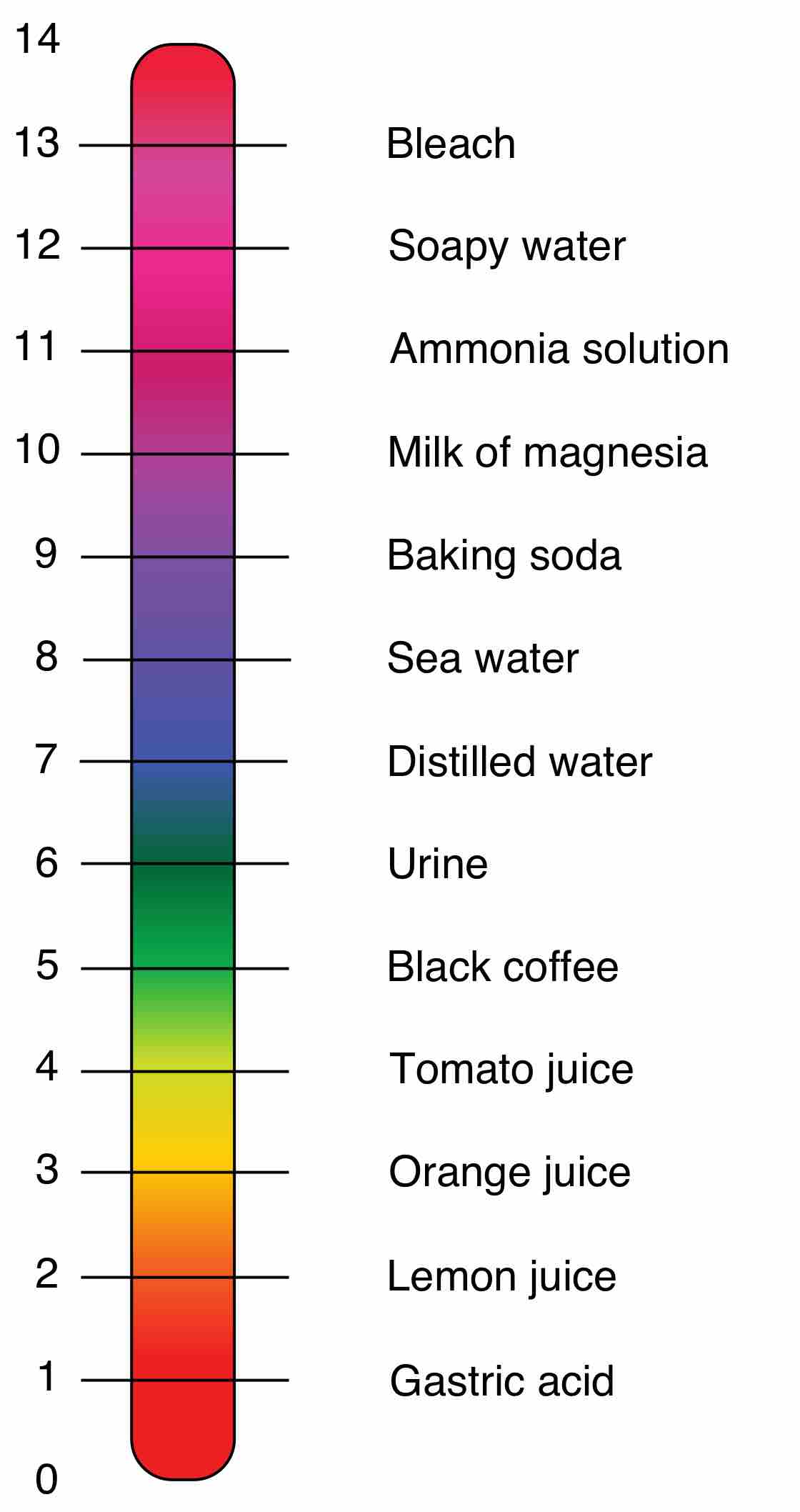In chemistry, pH is a measure of the activity of the (solvated) hydrogen ion. In other words, it is a measure of hydrogen ion concentration. Pure water has a pH very close to 7 at 25°C. Solutions with a pH less than 7 are said to be acidic, and solutions with a pH greater than 7 are said to be basic or alkaline . The pH scale is traceable to a set of standard solutions whose pH is established by international agreement. The pH of different cellular compartments, body fluids, and organs is usually tightly regulated in a process called acid-base homeostasis. Microorganisms live and thrive within specific pH levels.

pH scale
A pH scale with annotated examples of chemicals at each integer pH value
Neutrophiles are organisms that thrive in neutral (pH 7) environments; extromophiles are organisms that thrive in extreme pH environments.
Alkaliphiles are microbes that thrive in alkaline environments with a pH of 9 to 11, such as playa lakes and carbonate-rich soils. To survive, alkaliphiles maintain a relatively low alkaline level of about 8 pH inside their cells by constantly pumping hydrogen ions in the form of hydronium ions (H3O+) across their cell membranes and into their cytoplasm.
Acidophilic organisms are those that thrive under highly acidic conditions (usually at pH 2.0 or below). Most acidophile organisms have evolved extremely efficient mechanisms to pump protons out of the intracellular space in order to keep the cytoplasm at or near neutral pH. Therefore, intracellular proteins do not need to develop acid stability through evolution. However, other acidophiles, such as Acetobacter aceti, have an acidified cytoplasm which forces nearly all proteins in the genome to evolve acid stability.